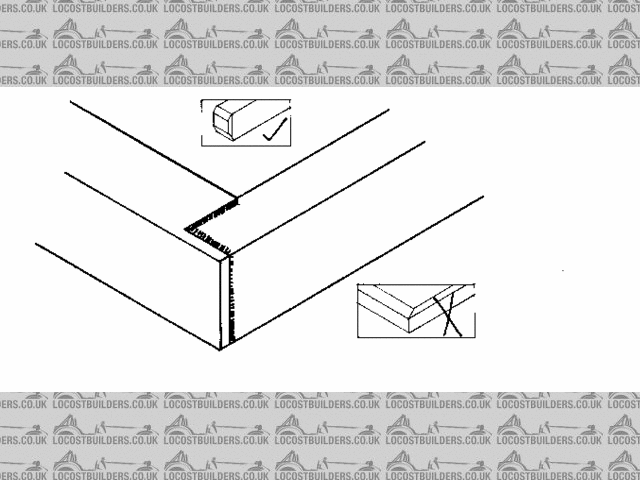thommy2
|
| posted on 22/12/03 at 01:23 PM |

|
|
why use endplates??
Why does everybody weld in plates at the end of the tubes, why not saw it off at the right angle.
a 90 degree becomes 2x45 degrees. It's much easier, nicer, stiffer and faster
|
|
|
|
|
JoelP
|
| posted on 22/12/03 at 01:31 PM |

|
|
something to do with planning i suspect. Had i planed, i would've done all the joins mitred, as it was it was only at the end i realised it was
crap.
still, its not too hard to weld squares on.
|
|
|
rabiddog
|
| posted on 22/12/03 at 09:26 PM |

|
|
One of the problems with mitred corners is absolute critical need to be accurate with them, if they are only 1/2 a degree out they wont be square its
okay if the inside is slightly undercut but get it over cut and it wont meet, very time consuming also.
Trust me on this one, Im a joiner and often have to cut them in wood, enough said
Craig
Mmmmmmmm......beer....aaaaarrrrrggggghhh
|
|
|
thommy2
|
| posted on 22/12/03 at 10:25 PM |

|
|
well, I am using mitred corners. It look much nicerand is a lot stronger.
thereby I can use the CNC saw, so accuracy wont be a problem
|
|
|
Peteff
|
| posted on 23/12/03 at 12:21 AM |

|
|
I can't think of that many places on a chassis where you will need to mitre a joint. In fact I can't think of any only the square bit of
the base that forms the seating area. You could make that out of one length of steel but it wouldn't achieve that much in terms of adding
strength, just complicate it.
yours, Pete.
yours, Pete
I went into the RSPCA office the other day. It was so small you could hardly swing a cat in there.
|
|
|
thommy2
|
| posted on 26/12/03 at 04:17 PM |

|
|
well, you can use it in any corner. eg 45 degrees becomes two times 67.5 degrees
formula: 90-(corner you need/2)
so 90-(45/2) equals 67.5
|
|
|
Mark Allanson
|
| posted on 26/12/03 at 06:19 PM |

|
|
Mitres are fine for tree wood, but not for welded joints, they are weaker, have a massive potential for distortion, and start getting a little
difficult when you have 3 dimenional joints.
If you want closed ends but dont want to use end plates, use double stepped joints, awkward to make but stronger than straight butts.
If you can keep you head, whilst all others around you are losing theirs, you are not fully aware of the situation
|
|
|
thommy2
|
| posted on 26/12/03 at 06:48 PM |

|
|
Can you explain what a double stepped joint is. I am not english, so i don't get the words.
Thereby I think that mitres are stronger, but I have to do a stress analysis on that. I will show the results
|
|
|
Mark Allanson
|
| posted on 26/12/03 at 07:36 PM |

|
|
This diagram shows, you increase the welded area and reduce the tendancy to distort
 
Rescued attachment Not Mitres.GIF
If you can keep you head, whilst all others around you are losing theirs, you are not fully aware of the situation
|
|
|
thommy2
|
| posted on 28/12/03 at 06:00 PM |

|
|
Ok, I get it, can be done at a 90 degree corner. But it would be hard to do so at any other one.
|
|
|
blueshift
|
| posted on 28/12/03 at 06:18 PM |

|
|
I don't see that it would be that much harder. You just have to make an angled cut through three sides of a tube rather than a perpendicular
one. Not significantly harder than the cuts for a mitre, I'd think.
Before you start cutting the tunnel the only tubes that I can see that would benefit from mitres are B1, V and the L assembly, though if you did LC
the corners might interfere with the nosecone. Be nice if V were mitred in terms of flat sides to weld the round tube onto and bend the ali round, but
I heed Mark's words of wisdom.
|
|
|









